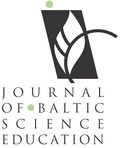MODELLING IN SCIENCE AND EDUCATION: THE WAY TO GET THE BETTER RESULTS IN REAL THROUGH THE USE OF AN IDEALIZED UNDERSTANDING
| Title | MODELLING IN SCIENCE AND EDUCATION: THE WAY TO GET THE BETTER RESULTS IN REAL THROUGH THE USE OF AN IDEALIZED UNDERSTANDING |
| Publication Type | Journal Article |
| Year of Publication | 2017 |
| Authors | Lakhvich, T |
| Journal | Journal of Baltic Science Education |
| Volume | 16 |
| Issue | 1 |
| Start Page | 4-6 |
| Pagination | Continuous |
| Date Published | February/2017 |
| Type of Article | Editorial |
| ISSN | 1648-3898 |
| Other Numbers | ICID: 1232123 |
| Keywords | computational modelling, educational model, science education, theoretical investigation, ways of reasoning |
| Abstract | The initial period of Science was almost completely empirical. Both Science itself and Science Education were based on the experiment. Then Science gained the new paradigm which was rather formal by nature and fundamental in methodological meaning. Still the tool for interconversion between the empiric and theoretical moieties seems to be the core point of the consideration and can be associated with the problem of modeling, which is one of the most important in modern Science. Earlier we postulated (Lakhvich, Kostareva, Lehankova, 2009; Lakhvich, 2010) that adequate modelling and visualization in particular is to be the core element for the modern Educational model and paradigm for Science. A great number of publications, devoting to the problem, confirm dramatically its relevance. Still the discussion in many aspects manifested the initial stage of the recognition, models mostly being discussed in terms of object recognition and computational modeling. We consider the category of modelling is more comprehensive and can be discussed in various aspects, some of them are all-pervading philosophy principle (Harnad, 1987), psychological tool for cognition (Lakhvich, Kostareva, Lehankova, 2009) and finally the model having for Science its own complex structure. |
| URL | http://oaji.net/articles/2017/987-1493049329.pdf |
| DOI | 10.33225/jbse/17.16.04 |
| Refereed Designation | Refereed |
| Full Text |
